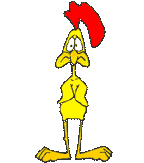Sculptures of Native American scenes made out of paper by Allen and Patty Eckman.
Tag: Indians
Riding a Dead Horse
The tribal wisdom of the Dakota Indians, passed on from generation to generation, says that when you discover that you are riding a dead horse, the best strategy is to dismount.
In modern education and government, however, a whole range of far more advanced strategies are often employed, such as:
1. Buying a stronger whip.
2. Changing riders.
3. Threatening the horse with termination.
4. Appointing a committee to study the horse.
5. Visiting other sites to see how others ride dead horses.
6. Lowering the standards so that dead horses can be included.
7. Re-classifying the dead horse as “living, impaired”.
8. Hiring outside contractors to ride the dead horse.
9. Harnessing several dead horses together to increase the speed.
10. Attempting to mount multiple dead horses in hopes that one of them will spring to life.
11. Providing additional funding and/or training to increase the dead horse’s performance.
12. Doing a productivity study to see if lighter riders would improve the dead horse’s performance.
13. Declaring that as the dead horse does not have to be fed, it is less costly, carries lower overhead, and therefore contributes substantially more to the bottom line of the economy than do some other horses.
14. Re-writing the expected performance requirements for all horses.
15. Promoting the dead horse to a supervisory position.
Joke Of The Day

“White cloud sounds like good Indian toilet paper,” says the Indian. “how much is it?”
“$1.00 a roll” the clerk replies.
“That’s pretty expensive,” responds the Indian. “what about the others?”
“Charmin is $2.00 a roll and no name is 50 cents a roll.”
The Indian doesn’t have much money so he opts for no name. within a few hours he’s back at the trading post.
“I have a name for the no name toilet paper,” he announces to the clerk.”we shall call it John Wayne.”
“WHY” asks the clerk.
“Cause it’s rough and it’s tough and it takes no shit off an Indian.”













